How to Achieve Pet-Proof Landscaping
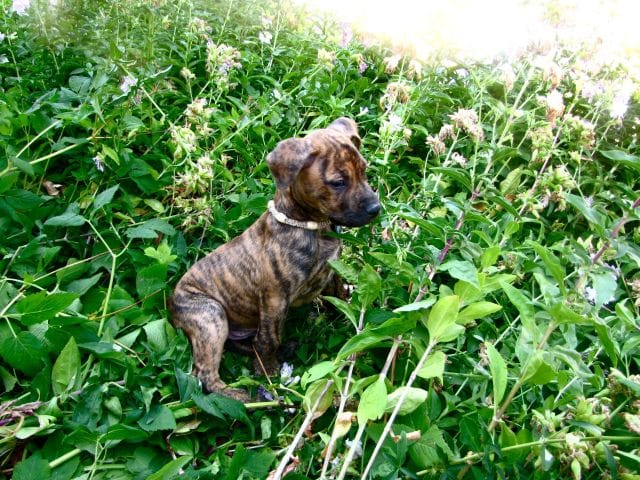
We love our landscaping and we love our pets, but the two do not always peacefully coexist in a manner that allows both to thrive.
Beautiful backyards with comfy outdoor living areas and elegant areas for outdoor entertaining are important to most Southern California homeowners, but it can be difficult to keep our yards looking beautiful when our beloved companions use them as their bathroom, play area and hunting grounds.
It is even more frustrating when the damage caused to our landscaping does not even come from our own pets but is, instead, caused by cats or dogs that belong to our neighbors and are allowed to roam the neighborhood freely.
Even if your landscaping is suffering from the effects of digging, pacing, roughhousing or regular restroom activities, you do not have to give up hope and settle for a landscape design that you do not love.
You cannot expect your dog, cat or other furry friend to appreciate your landscape design and understand the importance of keeping it looking beautiful.
But you can design your landscape to fit your pets’ needs while also fulfilling your need to have functional, attractive, inviting outdoor areas.
Read on for tips that will help you create a resilient yard that is ready for pets to use it and abuse it regularly.
Pet-Proof Landscaping: Pacing
If you have a dog who paces in a particular area or makes his rounds along the edge of your property to guard his territory, you are not likely to break him of this.
First of all, pacing back and forth can be a sign of a serious health condition or emotional distress, so new pacing or pacing that has not previously been explored to rule out health issues warrants a trip to the veterinarian.
Aside from pacing related to mental or physical health issues, some dogs will walk the edge of your property to keep an eye on things.
As he is doing his job of patrolling the property, he is likely going to wear a path along your fence.
This is particularly true if the ground near the fence is covered with dirt, a natural grass lawn or a flowerbed.
If you know your dog is a pacer, there is no reason to fight this and install a landscaping feature that will ultimately be ruined.
Instead, a smart homeowner who knows it is unlikely that this protective behavior will go away will create a walkway for his or her pooch to make the landscaping work for all parties involved.
A walkway made from gravel, paving stones, or stepping stones set in mulch or wood chips will provide your dog with a nice walkway that will also act as a walkway for you and your guests.
It also helps you avoid the constant battle of constantly replanting a flower bed or re-seeding grass that is never going to grow properly.
If you want to avoid hardscapes and love the look of grass, you can also simply replace your natural grass lawn with durable, attractive synthetic turf for your dog to enjoy.
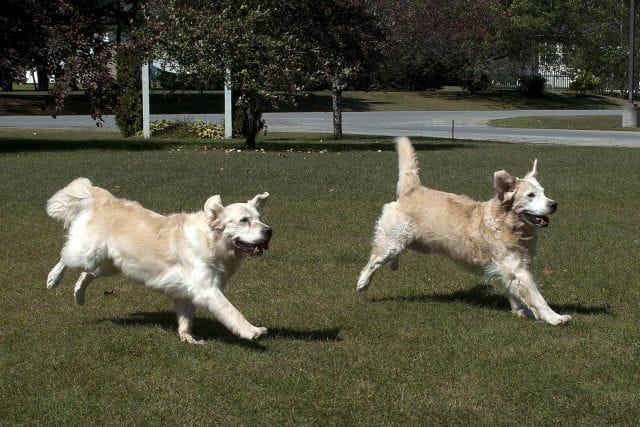
Pet-Proof Landscaping: Roughhousing
Even well-trained dogs who would never dream of digging up your lawn may ruin areas of natural grass.
Fast turns, sliding stops, tumbling with their buddies and digging in for a quick take off can definitely take a toll on natural grass lawns.
Most dog owners want some sort of soft, grass-like surface on which their dogs can run and play, but natural grass is simply not durable enough to successfully meet this need.
If you want your dogs to have a grassy areas where they can play or bask in the sun, artificial grass is a much more durable option that will better withstand regular use by animals.
It also provides a sturdy, level surface that reduces tripping hazards and the risk of injury while playing.
Pet-Proof Landscaping: Bathroom Activities
There is perhaps nothing more frustrating than finding cat feces in your flowerbeds and brown spots where your dog urinates on your natural grass lawn.
One way to fix this problem is to create a separate rest area for your dogs and train them to only use this area to relieve themselves.
Pea gravel is a great ground cover for pet rest areas, since most dogs will use it and it is easy to clean up after them.
Another option is to supervise your pets when they spend time on your natural grass lawn, and clean up after them immediately after they relieve themselves.
If you immediately rinse away urine, you can dissipate most of the nitrogen that leaves the brown spots on your lawn.
Pet-friendly artificial grass is a great option for rest areas or for use in lawn areas that are frequented by dogs.
With this easy-to-clean option, you never have to worry about brown spots and can easily remove solid waste.
If your issue is neighborhood dogs or cats coming into your yard to use it as their personal litter box, you need to take steps to make your yard less appealing to them.
There are several commercial solutions available that can be sprayed or sprinkled around the edge of your yard to dissuade intruders.
You can also use home remedies, such as sprinkling cayenne pepper in your flower borders to keep cats out.
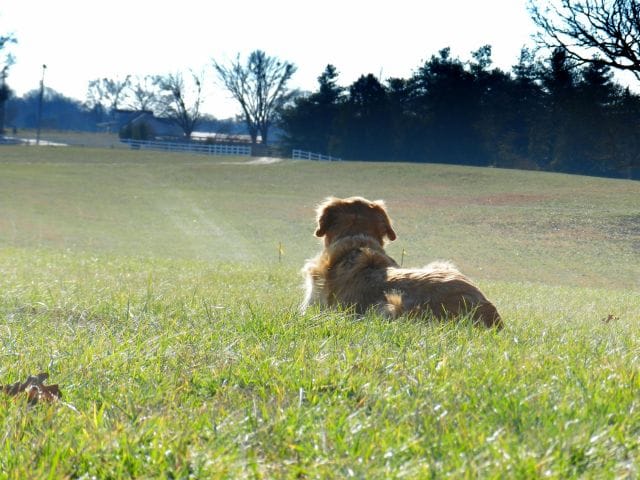
Pet-Proof Landscaping: Digging
There are lots of reason dogs dig, including trying to escape, boredom, excessive heat and trying to get to prey.
The first step in dissuading your furry friend from digging up your yard is paying attention to where and why he or she is digging.
If she digs along the fence line and seems to be trying to escape your yard or get to your neighbor’s yard, you will need to do what you can to make sure she feels safe in your yard or reduce her desire to get into your neighbor’s yard.
To keep dogs from digging under fences, you can partially bury large rocks as a border along the bottom or your fence or you can bury wire fencing along the bottom of your fence.
If you plan on replacing your fence or installing a new fence, you can also dig a trench and bury the bottom of the fence at least one foot underground.
If your dog is digging holes in your yard because she is looking for a cool place to escape from the heat, you need to provide her with better protection from the elements.
This may mean installing a dog house, adding a shade structure over your dog run or allowing your dog to spend more time indoors.
If your dog is digging up plants or digging near trees and shrubs, she may be trying to get to some sort of prey burrowing there.
Look for evidence of animals and take steps to remove them from your yard.
Your dog may also be digging simply because she is bored.
If this is the case, you should be able to curb this behavior by providing her with more toys, spending time with her and keeping her entertained with other activities.
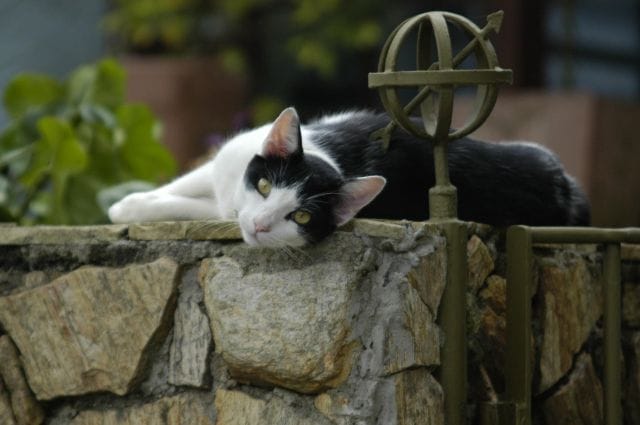
Pet-Proof Landscaping: Flower Beds
If your landscaping woes include your dogs or cats laying in your flower beds and crushing your plants, you can discourage this behavior by making your flower beds and planters less attractive.
One way to do this is to strategically place small rocks or stakes throughout the garden bed.
Alternatively, you can place a small fence around your flower beds to keep small pets out.
General Tips for Keeping Your Pets from Ruining Your Landscaping
Here are 10 additional tips to help you create outdoor living areas that are attractive and pet proof:
1. Keep cats out of your garden by planting strong-smelling plants that they do not like, such as sage, rosemary and Coleus canina.
2. Install a fence to keep neighborhood dogs out of your yard.
3. Spray or sprinkle a commercial deterrent around the border of your property to keep neighborhood cats and dogs out.
4. Spread coffee grounds in your garden to discourage feline visitors.
5. Build your dogs a comfortable, roomy dog run for them to enjoy when unsupervised, and supervise them when they are free in your yard.
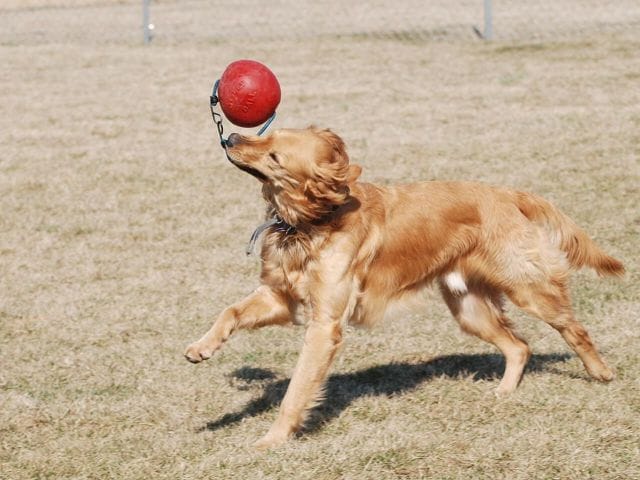
6. Use more hardscapes in your landscape design to create attractive outdoor living areas that can withstand regular use.
7. Create paths with gravel, concrete or paving stones where your dogs can walk or run without destroying plants.
8. Dogs are usually less attracted to densely planted garden beds, so you may be able to keep your dogs out of your flower beds by simply planting your flowers and plants closer together.
9. Temporary fencing can go a long ways in keeping dogs out of garden areas while the plants mature.
10. Chicken wire laid on the ground in a newly planted garden or placed over the ground on stakes can keep dogs and cats away while the plants grow.
Your Turn…
How have you made your landscaping pet proof?
Photo Credits (in order of appearance): morgueFile, wattersflores; morgueFile, earl53; morgueFile, pippalou; morgueFile, JulioOttoboni; morgueFile, pippalou